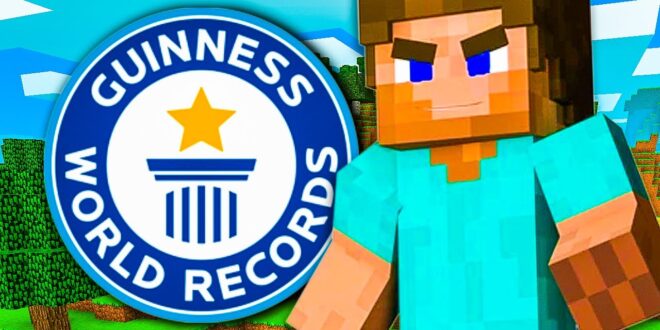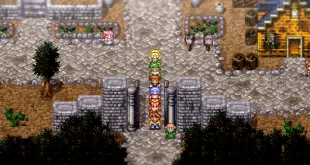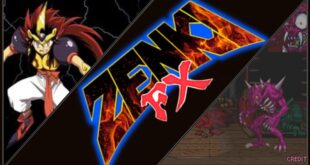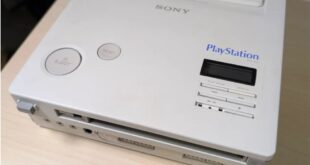The “Asterisk” in Minecraft’s Sales Record: A Multi-Platform Rant
Before you go any further, consider signing the petition to ensure these games do not get repurchases counted towards sales records.
Minecraft, the sandbox game that’s captured the imaginations of millions, proudly holds the title of the number one selling game of all time. But before we continue to parade this achievement around the gaming world, let’s take a moment to put an asterisk next to this record. Why, you ask? Because its sales figures are as bloated as a creeper after a buffet of gunpowder, and here’s the explosive truth.
My nephew, a die-hard Minecraft enthusiast, has downloaded and repurchased the game a staggering 10 times across various platforms. Yes, you read that correctly—ten times. And he is not an outlier; he’s the rule. From Xbox to PlayStation, PC to mobile devices, and let’s not forget the numerous editions for each, Minecraft has been bought over and over again by legions of fans.
Imagining a scenario in which people were buying 10 copies of “Super Mario Bros. 3” for the NES back in the early 1990s. Because it never happened. These records deserve asterisks.
The Multiplicity of Minecraft: A Tale of Many Systems
The genius—or should I say, the cunning strategy—behind Minecraft’s sales record is its omnipresence. It’s not just a game; it’s a phenomenon that’s invaded every gaming platform known to the modern player. And with each new device, console, or upgrade, comes another opportunity to repurchase the same game.
It’s as if Mojang stumbled upon the philosopher’s stone of gaming, turning every device into an opportunity to sell the same experience with a slightly different wrapper. And we’ve lapped it up, time and time again, convinced that playing Minecraft on our new tablet will be a revolution compared to our old laptop.
The Cost of Craft: When Loyalty Equals Multiple Purchases
Don’t get me wrong, Minecraft is a marvel of modern gaming, a digital Lego set that has built a community and creativity beyond what anyone could have imagined. But let’s not kid ourselves—its sales figures aren’t just a testament to its popularity, but also to its availability and our readiness to repurchase it at every turn.
The issue here isn’t just about one’s personal choice to buy Minecraft multiple times; it’s about how these choices are being used to tout a sales record. It’s like giving a high score to a student who takes the same test ten times and averages the scores. Sure, the final number might look impressive, but it doesn’t tell the whole story.
The Asterisk of Achievement: A Call for Transparency
So, where do we go from here? It’s time for the gaming industry to adopt a more transparent approach when boasting about sales records. We need a system that acknowledges the difference between unique purchases and repurchases. Without this, we’re not celebrating the widespread appeal of a game; we’re celebrating the depth of our pockets and our willingness to double-dip, triple-dip, and so on.
It’s time to place an asterisk next to Minecraft’s sales record—a small symbol that speaks volumes. It’s a call to recognize the nuances behind the numbers and to remember that while Minecraft is indeed a giant in the gaming world, its record is as much a product of strategy as it is of sheer popularity.
In Conclusion: A Pixelated Perspective
As we move forward, let’s continue to celebrate Minecraft and its accomplishments, but let’s also be mindful of the context behind them. Let’s praise the game for its innovation, its community, and its impact on gaming and education, but also let’s be honest about what its sales figures represent. It’s not just a game sold once to every gamer; it’s a game sold many times over to a dedicated few.
And so, we place that asterisk next to Minecraft’s record, not to diminish its success, but to paint a more accurate picture of its journey. After all, in a world made of blocks, it’s only fair that we get the full story—one block at a time.
Arguments Against Counting Repurchases:
- Inflated Sales Figures: Counting repurchases may inflate sales figures, potentially misrepresenting the number of unique players or the game’s reach.
- Consumer Expectation: Some consumers expect a one-time purchase to provide access across multiple platforms, especially in an increasingly digital and interconnected gaming landscape.
- Double-Dipping: Critics argue that repurchases are a way for companies to “double-dip” into consumers’ wallets for essentially the same product.
- Fair Comparison: When comparing the success of games, repurchases can skew the data, making it difficult to fairly compare the popularity of different titles.
- Economic Pressure: Consumers might feel economically pressured to repurchase games they already own due to platform exclusives or discontinued support for older versions.
- Digital Ownership: With digital ownership, some argue that once a game is purchased, the consumer should have access to it across all platforms, similar to digital movies or music.
In conclusion, the debate on whether to count repurchases in Minecraft’s sales records comes down to how we define a sale and what that sale represents. Is it purely a financial transaction, or does it represent an individual user’s engagement with the game? The answer to this question will likely vary depending on the perspectives of game developers, marketers, industry analysts, and consumers.
Consider signing the petition to change the records for these titles once and for all.
 Retro-Replay.com Retro gaming reviews, news, emulation, geek stuff and more!
Retro-Replay.com Retro gaming reviews, news, emulation, geek stuff and more!




